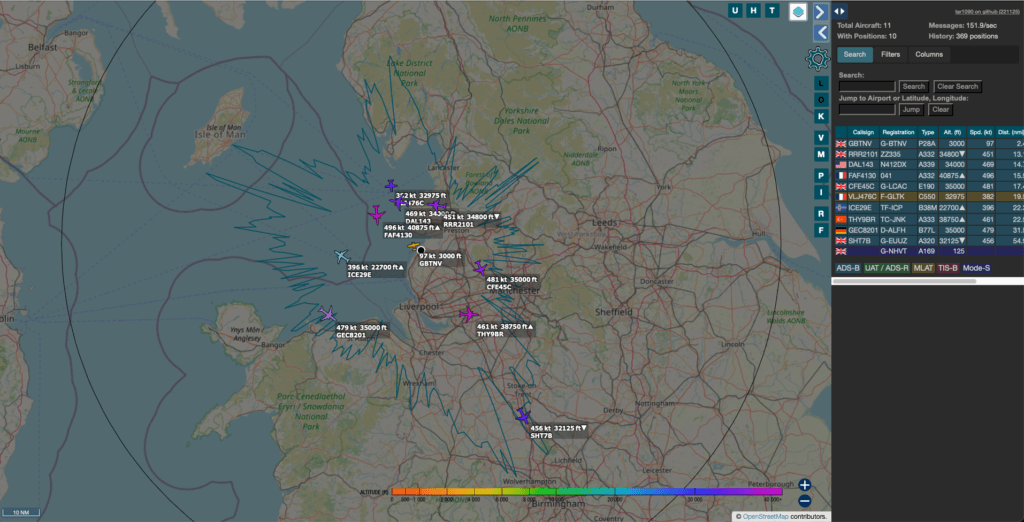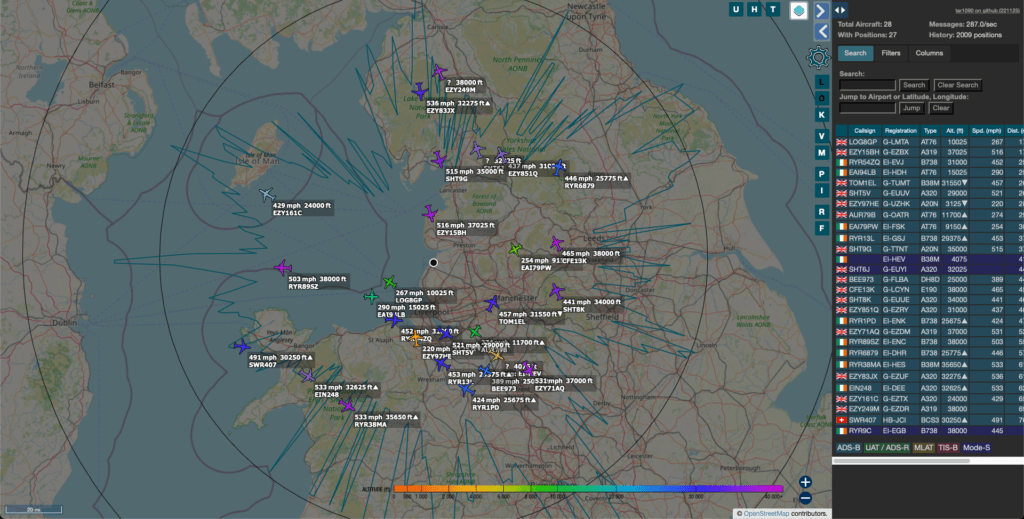ADS-B setup using an SDR dongle and a Raspberry Pi
I can’t quite exactly remember when, but several years ago I came across the subject of receiving ADS-B signals direct from aircraft. Sure, you could go online to places such as Flightradar24 and see everything there (without the technical fuss), but it must be far more fun to be able to know what you’re seeing is actually what your receiver is picking up directly? When I started to look into this, at the time, at least for me, the price of doing this was somewhat prohibitive. So I forgot all about it and continued to subscribe to Flightradar24 for such times that I wanted to see what was flying in the skies around me.
It was then I became aware that there were sites other than Flightradar24 that provided similar data, and what’s more, did so under using a model that I’m very much in favour of. I’m talking of course about ADS-B Exchange. Their site states:
Welcome to ADSBexchange.com, the world’s largest co-op of ADS-B/Mode S/MLAT feeders, and the world’s largest public source of unfiltered flight data. Access to worldwide flight tracking data opens up a whole new world of flight monitoring for hobbyists, researchers, and journalists alike.
Given my desire to contribute to ‘citizen science’ (the topic of a future blog) I noticed the site gave details on how an individual could feed data into their system. If this is something you fancy having a go at yourself, all you need to do is follow the instructions here. Given how simple and cheap it seemed, I had to have a go. You’ll require a cheap SDR dongle (mine cost £20 off Amazon) and a Raspberry Pi. With no more than this, and the very sub-standard little (indoor) aerial that came with the dongle, l am now able to both see and feed data accordingly. Below is an example of what I first saw. If you want to simply view the data and not necessarily share it, you don’t need the Raspberry Pi, just run some client software (as instructed using info on the link above).

The blue jagged line represents the furthest I’ve ‘seen’ an aircraft from my location. Given the size and location of the aerial, this I thought was pretty impressive! With the proof I had that everything worked, I decided it was time to improve the set up. One, to get a bespoke aerial put up outside and two, get one of the recommended SDR dongles, which by all accounts is more sensitive at the frequency needed for receiving ADS-B signals. The new dongle (as recommended in the article) is currently on its way from China so a report on what improvement that brings will have to wait for now, but the new 1090MHz aerial is now up outside at a height of only three metres, you can see the difference below.

I’m now getting coverage as far north as Carlisle, Birmingham to the south, to the west nearly as far as the east coast of the island or Ireland and also now out towards the east coast. A huge improvement. The aerial I use I got off eBay from Broadsword Antennas (ten element vertical). It’s well made and for the price is well worth the money.
I will amend this post once I’ve got the new receiver in place and report if there is any significant change in performance, but in the meantime, if you have the inclination, and this sort of thing interests you, why not give it a go?
UPDATE – 4th December 2022
All the results above were achieved with what I referred to as the ‘cheap and nasty’ dongle off Amazon. Here’s the link to one I use on Amazon. With nothing to compare it with, I’d say it does the job very well. But, me being me, I thought it best to order the recommended dongle from the article, namely a RTL-SDR manufactured one. It says it’s likely to be more sensitive. So, an order was placed on eBay. It was only then I started reading around and established that as with many things, there are genuine dongles, and imitation ones. I read this article on the rtl-sdr site and soon realised what I’d bought off eBay was likely not a genuine dongle. I’ve now ordered an official one off their site. Meanwhile, the other one has now arrived. In RF terms it’s a deaf as post and only works intermittently. It will get returned. So, be aware of what you’re purchasing!!
UPDATE – 22nd December 2022
The ‘official’ RTL-SDR dongle has arrived and I’m pleased to report that at least this one works. I’ve undertaken some like for like tests with my original Amazon dongle (details above) and to be honest I really can’t tell the difference (at least for ADSB reception). So, I guess my advice is, go with the cheaper one!
UPDATE – 25th December 2022
Please ignore the previous update (22nd December). I’ve swapped back to the official RTL-SDR dongle and have now noticed it’s picking up more aircraft on the fringes. So much so, the ‘jagged blue’ coverage map is now quite a bit wider.
ADS-B setup using an SDR dongle and a Raspberry Pi Read More »